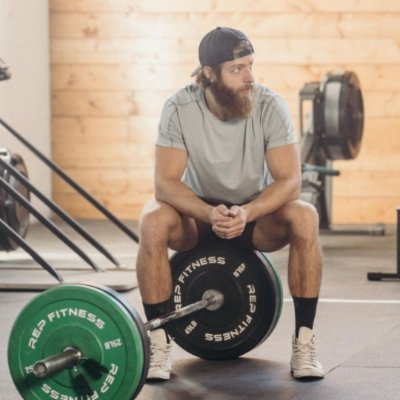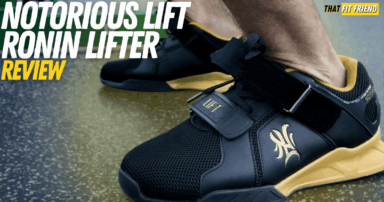That Fit Friend is supported by its readers. I [Jake Boly] run this site myself and buy the gear I review. If you purchase through my site, I may earn commissions on sales, read more here!
Rhone and Ten Thousand are both popular apparel options for men in need of workout and lifestyle apparel. Both companies deliver high-performing products that offer handfuls of similarities with slight unique differences that make the question of choosing between Rhone and Ten Thousand that much tougher.
If you’re on the market for men’s workout shorts, then you’ve likely seen the Rhone Mako Short and Ten Thousand Interval Short before.
For context and background, the Mako Short and TT Interval Short are both of the most popular training short options for each company, so it’s no wonder you’ve likely seen them in passing before, whether it was through an ad or athlete you follow.
- Rhone Mako Short Performance
- Ten Thousand Interval Short Performance
- Mako Short Vs Interval Short Durability
- Rhone Vs Ten Thousand Sizing
- Rhone Vs Ten Thousand Price
- Liner Vs Linerless
- Rhone Mako Short Vs Ten Thousand Interval Short FAQs
For additional background, I know Ten Thousand and Rhone both make a wide variety of shorts, but I chose to compare the Mako and Interval because they’re the most aligned when it comes to how each company discusses them and how they perform.
Rhone Mako Short Performance
The Rhone Mako Short performs consistently well across the board in regard to versatility. This short features a 4-way stretch shell and gusseted seams for mobility support, so when you’re going into deep ranges of hip flexion, this short does a really good job at moving with you versus restricting you.
In the Rhone Mako Short, I want to discuss three callouts that I think to play really well into short’s overall performance. The first callout is how solid the anti-odor tech is in these shorts. The Rhone Mako Short with the liner features GOLDFUSION™ Anti-Odor Technology which is fantastic for guys like myself that love shorts with liner built-in and wearing their pairs for a few sessions before cleaning them.
Another callout and positive attribute of their pair of shorts is their overall comfort. These shorts are super comfortable for day-to-day wear and recreational training. The liner option has a compression liner that doesn’t feel overly tight or restrictive, and the linerless option is wispy and light, which makes them fantastic lounge shorts as well.
On top of the above, the pockets are also fairly deep, so you can easily bring your wallet and phone with you when you’re out and about and keep them relatively secure. Note, I’m talking about the traditional pockets with this point. The “media pocket” is pretty useless since it can’t store phones that are similar in size to the iPhone 7+s (it’s time for an update, Rhone!), my newer iPhone doesn’t fit well at all.
The final pro about this pair of shorts is their durability for more recreational training. I think this pair of shorts will last a while if you’re someone who trains recreationally in the gym, do HIIT, classes, and other forms of activity similar to these.
There are a couple of areas of improvement that I think the Rhone Mako Short could receive. Personally, these are not my go-to option for powerlifting because I’m nervous the knurling will tear up the shell, so in the context of strength sports, these are not my favorite. Their durability is solid for non-abrasion-focused activities but falls short for things like barbell-focused work.
Another aspect that I’m not a fan of with this pair of shorts is their waistband construction. When training, I’m not the biggest fan of waistbands that have the more bunched-up construction. I think they fit a little odd and the waistband on the Mako Short feels somewhat overbearing at times.
Interval Short Performance
The Ten Thousand Interval Short is another great option for versatile training but does a slightly better job at accommodating strength sports and more serious training. This short has been one of my go-to options for barbell work, functional fitness, and sport-focused training.
The first major callout for Interval Short is their overall ability to be a high-performer in pretty much any setting. Their 4-way stretch shell is fantastic for accommodating folks with more muscular legs and their waistband is secure and comfortable for functional fitness and athletic-focused training including things like jump, agility work, and running.
The second major callout is the Perfect Pocket System which delivers security to your valuables when training and daily life. For shorter runs, the zipper pocket is a good size for locking down your phone which is huge to prevent the phone from swinging around and feeling uncomfortable.
I think the final callout for the Interval Short is their overall durability. Very rarely have I had any issues with the durability in my Interval Short no matter the style of activity I was doing in them. Their outer shell does a good job at preventing abrasion from barbell knurling and I’ve yet to have my compression liner rip in these shorts even in my heaviest sessions (I’ve had Lululemon and Vuori liners blow out before mid-squat set).
I’m personally pretty low maintenance so the fact that the Ten Thousand Interval Short never requires additional thought or worry is a nice subtle pro for me. You can wear them for pretty much anything and not stress them getting destroyed or breaking down on you.
The only issue I’ve ever run into with the Interval Short is that I had one pair’s zipper pocket rip after using them a ton for about a year and a half.
To be fair, I don’t even know if I can fault the shorts because I was pushing them to their limit fairly regularly for a year plus, so in the grand scheme of things, they did last a while compared to other shorts I’ve ripped in less time.
Long-Term Durability Analysis
To be honest, I don’t think you’re going to experience a glaring durability issue in either of these shorts especially within a year of their use. They both have strategic construction features to prolong their life and for those that train more recreationally, both of these pairs should last you a while.
The thing with durability and getting the most out of your shorts and investment is the consideration of the activities you plan to use each pair of shorts for. For example, while I think most won’t experience durability issues with either of these models, there is definitely a clear winner for more serious training.
If you’re a barbell-focused athlete, CrossFit athlete, or someone who trains outside often, then I think the durability of the Ten Thousand Interval Short will fair better for you. This model’s shell is more abrasion resistant and it does a really good job at preventing tearing from barbell knurling.
The Rhone Mako Short works for this style of training, but I think the runway in which you won’t experience durability problems with this style of training and this model is slightly shorter. I’ve had multiples pairs of the Interval Short last a couple of years with no shell or compression liner breakdown.
Sizing Comparison
For the sake of consistency, I have the Rhone Mako Short and Ten Thousand Interval Short in their Medium 7″ lined versions to assess how they fit and feel compared to one another.
In the image below, I‘m wearing the Medium 7″ lined Mako Short and Interval Short to help you see how they fit in regard to the dimensions provided.
My Sizing Dimensions
- Waist: 33″
- Hip Width: 38″
- Mid-Thigh: 23.5″
- Height: 6′ 0″
Both shorts fit true in regard to Rhone and Ten Thousand’s sizing recommendations. The Rhone Mako Short’s compression liner doesn’t hug nearly as tight and neither does the waistband, which is not necessarily a bad thing by any means, there’s just a slight difference in overall tightness with this short fits compared to the Interval Short.
Price Breakdown
For the Rhone Mako Short and Ten Thousand Interval Short there price points are similar, but if you’re going linerless, then you can save a little bit by opting for the Interval Short.
- Ten Thousand Interval Short (Liner): $68 USD
- Rhone Mako Short (Liner): $68 USD
If you love linerless shorts or wearing your own compression shorts, then you can opt for the linerless options and their price points will vary slightly.
- Ten Thousand Interval Short (Linerless): $58 USD
- Rhone Mako Short (Linerless): $68 USD
For a pair of premium workout shorts, anything between $55 USD to $75 USD tends to be the industry standard, so these prices are pretty in line with the rest of the industry.
Liner Vs Linerless Options
Of all the questions that I receive for these pairs of shorts, I get a lot of liner vs linerless questions. I can tell you now, both options are great and come with their pros and cons, and I’d suggest making the decision per your preferences and wants.
Rhone Mako Short Vs Ten Thousand Interval Short Liner
Personally, I love the liner options because it prevents me from having to worry about another article of clothing. Plus, for my style of training that often revolves around a barbell, a compress liner helps keep my good secure while giving me a short that feels seamless in nature.
Sometimes a short’s shell can stick on compression liners that aren’t baked into the shorts, so the liner options limit any potential issues here. I mentioned this above, but both options fit true and the Mako Short’s compression is slightly less tight which could be a good thing for more recreational guys.
Rhone Mako Short Vs Ten Thousand Interval Short Linerless
If you’re lounging, running errands, or just love wearing your own compression liner when you train, you can’t go wrong with either linerless option. Both shorts are wicked comfortable and their 4-way stretch shell moves well with you whether you’re going no compression liner or wearing your own.
The only slight bias I have towards these linerless options is that the Interval Short does cost $10 USD less than the Mako Short. So, if you’re trying to save a little and shopping for a linerless short, then you really can’t fault the Interval Short in this context.
 ✖ |  ✖ | ➕ Add product to compare | ➕ Add product to compare | ➕ Add product to compare | |
| Overall TF2 Score | |||||
| Stability | |||||
| Versatility | |||||
| Durability | |||||
| Quality | |||||
| Price | $68 | $68 | |||
| Best For |
|
| |||
| Review | Link to Review | Link to Review | |||
| Shop | Use "BOLY15" to Save | Shop and Save 15% |
Rhone Vs Ten Thousand FAQs
For additional context into which short may be better for your goals, needs, and preferences, I’m going to answer a few commonly asked questions below.
What are the inseam options for the Rhone Mako Short?
The Rhone Mako Short comes in 7″ and 9″ inseam options in both the liner and linerless models.
What are the inseam options for the Ten Thousand Interval Short?
The Ten Thousand Interval Short has a 5″, 7″, and 9″ inseam option in the liner and linerless models.
How do you clean Rhone and Ten Thousand Shorts?
Personally, I’d suggest doing the following if you want your shorts to last. Wash on cold with a “delicate” cycle, then let your shorts air dry. I think washers and dryers used conventionally can cut down the lifespan of your shorts and if you’re investing a good deal of money in them, then you’ll likely want them to last!
Takeaway Thoughts
The Rhone Mako Short and Ten Thousand Interval Short both perform really well across the board. I think the Ten Thousand Interval Short is the better short for high-performance-focused athletes and the Rhone Mako Short is a solid option for more recreational training.
If you have any questions about either of these shorts, drop a comment below or reach out to me personally via Instagram (@jake_boly)!














Add a Comment